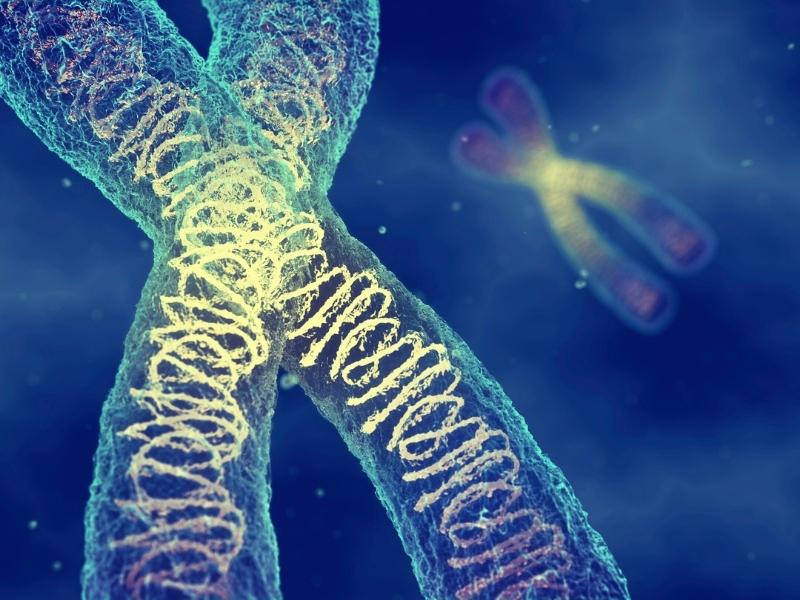What is pre-implantation genetic screening?
Pre-implantation genetic testing (PGS) or comprehensive chromosomal screening (CCS) analyzes each individual embryo to determine if it has the correct number of chromosomes.
How is CCS / PGS testing accomplished?
To take advantage of CCS, in-vitro fertilization (IVF) must be performed to allow our embryology team to analyze your embryos. Briefly, the ovaries are stimulated with medications and then a retrieval procedure is performed where on average, about 10-15 eggs are retrieved. These eggs are then fertilized and cultured (grown) in the lab for 5 (and sometimes 6) days. Embryos that develop into a high quality day 5/6 blastocyst are then analyzed. To analyze each embryo our embryology team removes a few of the cells (usually about 5) from each embryo’s early placenta, also known as the trophectoderm. These cells are then sent for analysis and testing at an outside company (e.g. Natera© – www.natera.com or IVIGen© – www.ivigen.com) while your embryos remain at our Littleton IVF laboratory.
What are the benefits of CCS testing?
First and foremost higher CCS testing usually means higher live birth rates as demonstrated by a groundbreaking randomized controlled trial in 2013 (Scott R et. al., Fertility and Sterility, 2013). Second, patients who complete CCS testing typically have lower miscarriage rates. Third, CCS embryos have been screened to reduce their risk of having an incorrect number of chromosomes – a phenomenon known as aneuploidy. This means patients who complete CCS testing have a lower (but not zero) risk of diseases related to aneuploidy such as Down’s Syndrome (trisomy 21 or having 3 [instead of the normal 2] number 21 chromosomes. Finally, CCS is cost-effective for both patients with poor egg health (diminished ovarian reserve and /or advanced maternal age status), and conversely, those with high egg health parameters. Patients who are older are at greater risk of aneuploidy (figure 1) and therefore benefit from the testing. Younger women may grow several embryos to the blastocyst stage that appear visually normal but are genetically abnormal.
| 40 years + | 35-39 years | 30-34 years | |||||
| Probability of each embryo to be aneuploid |
73% | 48% | 35% |
Figure 1 – The percentage of day 5 embryos with aneuploidy (an abnormal number of chromosomes) increases with age.
CCS testing often saves most patients the time, expense, and emotional anxiety associated with a negative pregnancy testing or an abnormal pregnancy that results in a miscarriage and then possible surgery. CCS testing also provides couples with an explanation for why previous infertility treatment(s) may not have been successful. Lastly, and most importantly, CCS tested embryos have a very high implantation rate and therefore, a very high pregnancy rate (70-75%). This high implantation rate allows us to transfer a single embryo most of the time which means a low multiple gestation rate (about 1% or less). Because pregnancies with multiple gestations (e.g. twins) have more obstetrical complications this means more healthy babies in our patients’ arms.
What are the risks of CCS testing?
CCS testing, like all other tests is not perfect. For example, when we analyze the early placenta cells (trophectoderm), we assume these cells are identical to those of the actual baby (also known as the inner cell mass). This is true more than 95% of the time but in a few cases, there are exceptions and this is known as cellular mosaicism. Although uncommon, there are both false positive and false negative results associated with all forms of CCS testing. Also CCS testing tells us only about the number of chromosomes, providing no information about individual genes. We encourage all of our patients to take advantage of pre-natal testing guidelines as recommended by the American College of Obstetricians and Gynecologists. Lastly, removal of the trophectoderm cells, when performed on day 5 (blastocyst) embryos does not appear to directly harm the embryo or impair implantation or pregnancy rates. Although possible, it is rare for an embryo to not survive the biopsy process and most experts believe this is a consequence of an abnormal embryo and not the biopsy process.
How is an IVF cycle with CCS testing different from a conventional IVF cycle?
An IVF-CCS cycle takes about 4-6 months to complete from start to a positive pregnancy test. CCS testing of your embryos requires that we freeze the embryos because the testing and results take several days to accomplish and obtain. This separates or de-couples the embryo transfer process from the egg retrieval and lab aspects of IVF. This is positive for several reasons. First, it eliminates the risk of late-onset ovarian hyperstimulation syndrome which makes IVF safer. Second, it allows for more scheduling flexibility – remember: frozen or cryopreserved embryos are essentially in suspended animation and therefore, pregnancy rates do NOT decrease as you age. Lastly, new (and still preliminary and observational) data seems to indicate babies born from frozen embryo transfer cycles have lower rates of pre-eclampsia and small for gestation age (SGA) diagnoses.
What’s The Bottom Line?
In my opinion CCS testing represents a significant advancement in the treatment of infertility and I strongly encourage you to discuss this with your provider. As always, your treatment and testing should be individualized to your specific situation but it appears that for most patients, CCS translates in to higher live birth rates and more happy families!
| Contact: Appt or Ask Questions at 303-794-0045 or Email Us on our Contact Us page |


